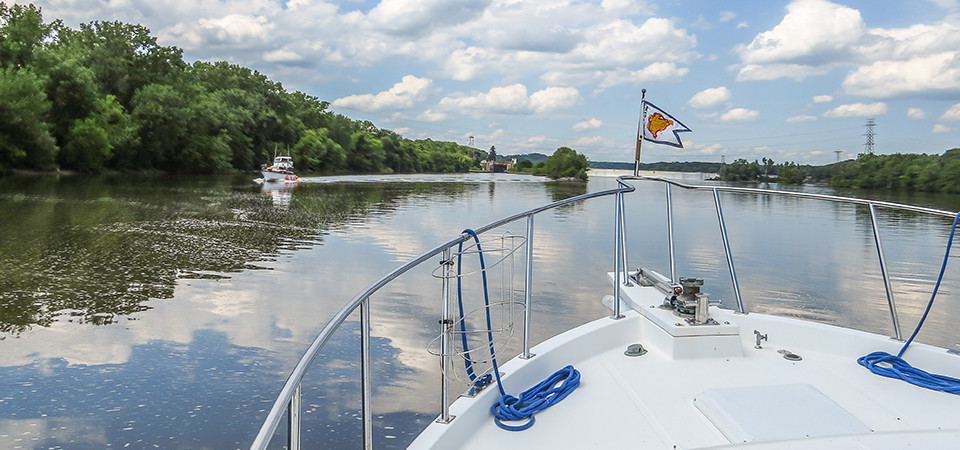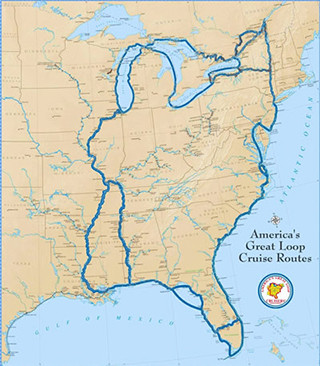What is the Great Loop?
The Great Loop is a continuous waterway that allows boaters to explore Eastern North America.

Boating along the Erie Canal, part of the Great Loop (image courtesy of Gladys L. Buzzell).
The Great Loop is a continuous waterway that recreational mariners can travel that includes part of the Atlantic, Gulf Intracoastal Waterways, the Great Lakes, Canadian Heritage Canals, and the inland rivers of America's heartland. Anyone who completes the journey is then named an official 'Looper.'
For a safe and enjoyable trip, there are a few things to consider when traveling the Great Loop—a great amount of time, a boat with less than a five foot draft (recommended) to travel inland waterways, NOAA nautical charts, and a NOAA radio. Along the way, it is possible to visit a number of national marine sanctuaries and estuarine research reserves.

Map showing the Great Loop (image courtesy of Raven Cove Publishing).
How does a boater embark on the Great Loop? If you start in Chicago, continue south in a counter-clockwise direction to take advantage of the river currents that run into the Mississippi River. While a few people stay on the Mississippi all the way to the Gulf of America (formerly Gulf of Mexico), most 'Loopers' choose to exit at the Tennessee River to avoid heavy barge traffic on the larger waterway. This path leads to the Tennessee-Tombigbee Waterway, which also flows to the Gulf.
Regardless of the Southern route selected, boaters can float downstream to the warm waters of the Gulf and explore the Flower Garden Banks National Marine Sanctuary. From there, cruise east on the Gulf's Intracoastal Waterway. While soaking up some Florida sun, visit the Florida Keys National Marine Sanctuary.
Then travel north up the Intracoastal Waterway and discover the Gray's Reef National Marine Sanctuary. Continue north on the Intracoastal to New York City. From the Big Apple, it's a straight shot up the Hudson to the Erie Canal. Then head west across to the Great Lakes. Boaters may visit Thunder Bay National Marine Sanctuary when sailing up Lake Huron and then finally returning back to Chicago.